Where is Ethiopia?
About Ethiopia
The Land
The People
Life and Death
Health, Energy and the Environment
Education and Work
Travel, Communication and the Media






Back to the Flags of Africa page




Ethiopia is a vast country in north east Africa.
Ethiopia is a landlocked country with no sea borders.
The land is mostly a high plateau with a central mountain range divided by a valley.
The geographical coordinates for the centre of Ethiopia, also known as lines of latitude and longitude, are:-
Latitude - 8 00N
Longitude - 38 00E
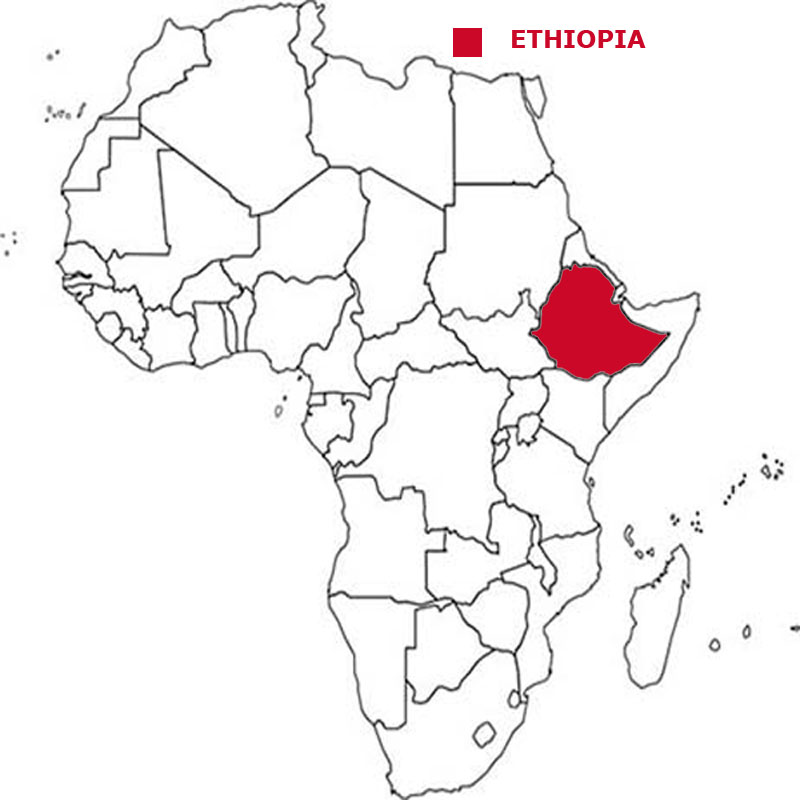

Check the weather in Addis Ababa now.
This is the time in Addis Ababa now
 The Ethiopian flag is three equal horizontal stripes of green, at the top, yellow and red. There is a yellow star inside a circle on a light blue disc centred on the
three stripes. The star and cirle is called a pentagram. Five yellow lines stretch out from between the stars points. Green represents hope and the fertility of the
land, yellow is for justice and harmony while red stands for sacrifice and heroism in the defense of the land. The blue of the disc is for peace and the pentagram
represents the unity and equality of the nationalities and peoples of Ethiopia.
The Ethiopian flag is three equal horizontal stripes of green, at the top, yellow and red. There is a yellow star inside a circle on a light blue disc centred on the
three stripes. The star and cirle is called a pentagram. Five yellow lines stretch out from between the stars points. Green represents hope and the fertility of the
land, yellow is for justice and harmony while red stands for sacrifice and heroism in the defense of the land. The blue of the disc is for peace and the pentagram
represents the unity and equality of the nationalities and peoples of Ethiopia.
Ethiopia is a federal parliamentary republic with a president as head of state and a prime minister as head of the government.
In elections everyone over the age of 18 can vote.
The currency in Ethiopia is the birr.
Amharic is the official language.
Hear the National Anthem
These are the anthem words
We have already written our own history of England but are asking schools in Ethiopia to provide us with a detailed history of
their own country. Check how here.
![]()
![]() Back to the top
Back to the top

The total land area of Ethiopia is 1,096,570 sq kms which is the 11th largest in Africa.
Ethiopia has lakes, rivers and canals which total 7,730 sq kms.
Ethiopia has boundaries with 6 countries
- Somalia 1,640 kms
- South Sudan 1,299 kms
- Eritrea 1,033 kms
- Kenya 867 kms
- Sudan 744 kms
- Djibouti 342 kms
Ethiopia has no coastline.
The highest point in Ethiopia is Ras Dejen at 4,550 metres.
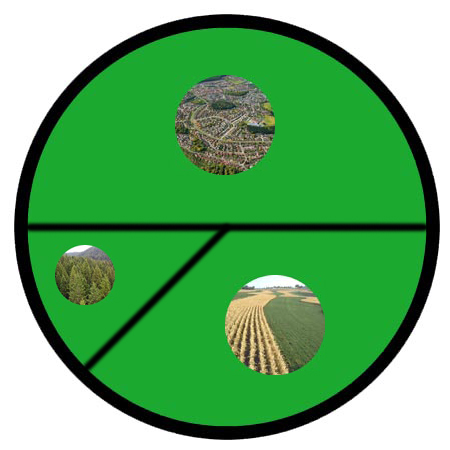

The total population of Ethiopia is 108.39 million people, making it the 2nd largest country in Africa by population.
Of this number 54.56 million are females and 53.83 million are males.
A person from Ethiopia is called an Ethiopian.
To be a citizen of Ethiopia, one of your parents must be a citizen of Ethiopia. It is not sufficient to be born in Ethiopia. You have to live in Ethiopia for
4 years before you can begin to apply for citizenship.
The largest five cities in Ethiopia, by population are:-
- Addis Ababa 2,757,729 people
- Dire Dawa 252,279
- Mek'ele 215,546
- Nazret 213,995
- Bahir Dar 168,899
 Each little Owlbut is 1 person and
the big yellow rectangle is 1 sq km. After a while you can compare countries and see which ones are the most crowded. Remember it is only an average as
more people live closer together in towns and cities than in villages out in the country.
Each little Owlbut is 1 person and
the big yellow rectangle is 1 sq km. After a while you can compare countries and see which ones are the most crowded. Remember it is only an average as
more people live closer together in towns and cities than in villages out in the country.
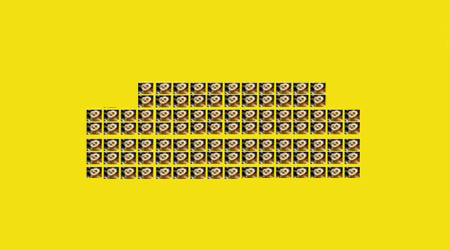
20.8% of the people live in cities or towns.

The birth rate in Ethiopia is 36.0 births per 1,000 of population
The death rate in Ethiopia is 7.5 deaths per 1,000 people.
Check this against the birth rate. If the death rate is higher than the birth rate then
the population will decrease unless immigrants arrive in the country.
There are 41.0 deaths of girls under 1 year per 1,000 of births and 55.3 deaths of boys.
The median age for females is 18.2 and for males is 17.8. The median age is that age which divides the population exactly in half so there are the same number
of people above the median age as below it.
The average age of a woman when she has her first child is 20.0.
The elderly dependency ratio is 6.3. This is the number of elderly people (ages 65+) per 100 people of working age (ages 15-64).
The potential support ratio is 15.8. This is the number of working-age people (ages 15-64) per one elderly person (ages 65+). As a population ages, the potential support ratio tends to fall, meaning there are fewer potential workers to support the elderly.
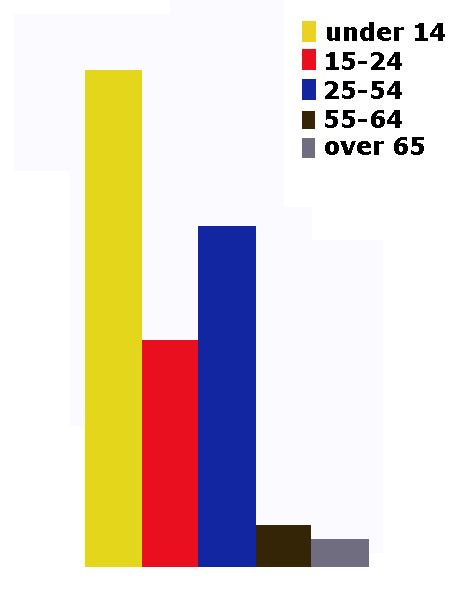
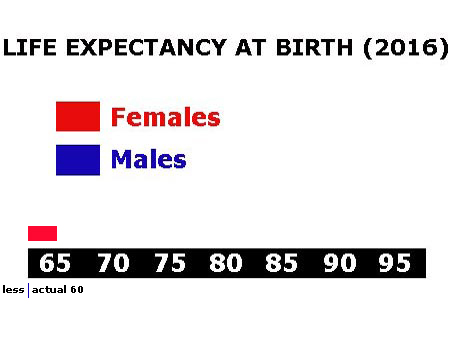

Ethiopia spends 4.9% of its total income on health care.
There are 0.1 doctors per 1,000 people.
There are 0.3 hospital beds per 1,000 people.
4.5% of the population are estimated as obese.
93.1% of the urban population and 48.6% of the rural population have drinking water that is either piped into their home or they have access to a public tap, a protected borehole, well, spring or
protected rainwater collection facility.
27.2% of the urban population and 28.2% of the rural population have access to a flushing toilet that is connected to a sewer, a pit latrine (that is a
permanent hole in the ground that is looked after) or a composting toilet.
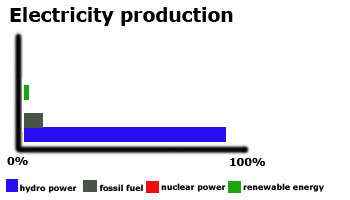
Ethiopia releases 9.3 million metric tons of carbon dioxide by burning fossil fuels in the process of producing and consuming energy. This puts it as the 14th highest in Africa.

Ethiopia spends 4.7% of its total income on education.
Children usually start school at age 7 in Ethiopia. Primary education is for eight years until age 15 and secondary education can continue till 18/19. This may be followed
by further education at a university or college.
We are waiting for information about school terms in Ethiopia.
41.1% of females and 57.2% of males are able to read and write by the age of 15.
25.2% of all people aged between 16 and 24 are not in work. Among females 30.9% are unemployed while with males 17.1% can't find work.
The total number of people available for work in Ethiopia is 52.82 million.
 They work in the following sectors.
They work in the following sectors.
- Agriculture includes farming, fishing and forestry work
- Industry includes mining, manufacturing, construction and energy workers
- Services is everything else

There are 17 paved airports in Ethiopia, which is the 12th highest number in Africa.
![]()
There are 659 kilometres of railways in Ethiopia, the 29th longest in Africa.
![]()
There are 110,414 kilometres of roads in Ethiopia, which means Ethiopia is in 7th place for the most kilometres of roads in Africa.
![]()
There are 2 major national newspapers in Ethiopia.
There are 62.62 million mobile phone users.
1% of the people have a fixed landline.

15.73 million people have access to the internet at home via any device (computer or mobile).


